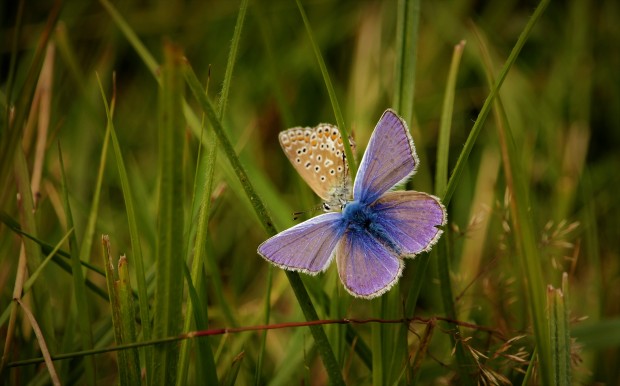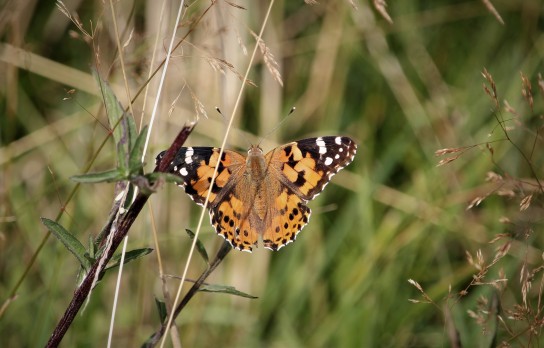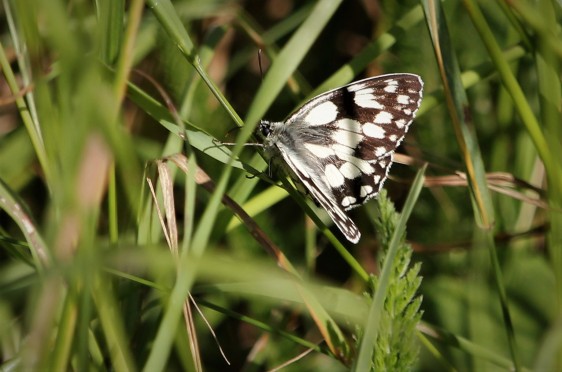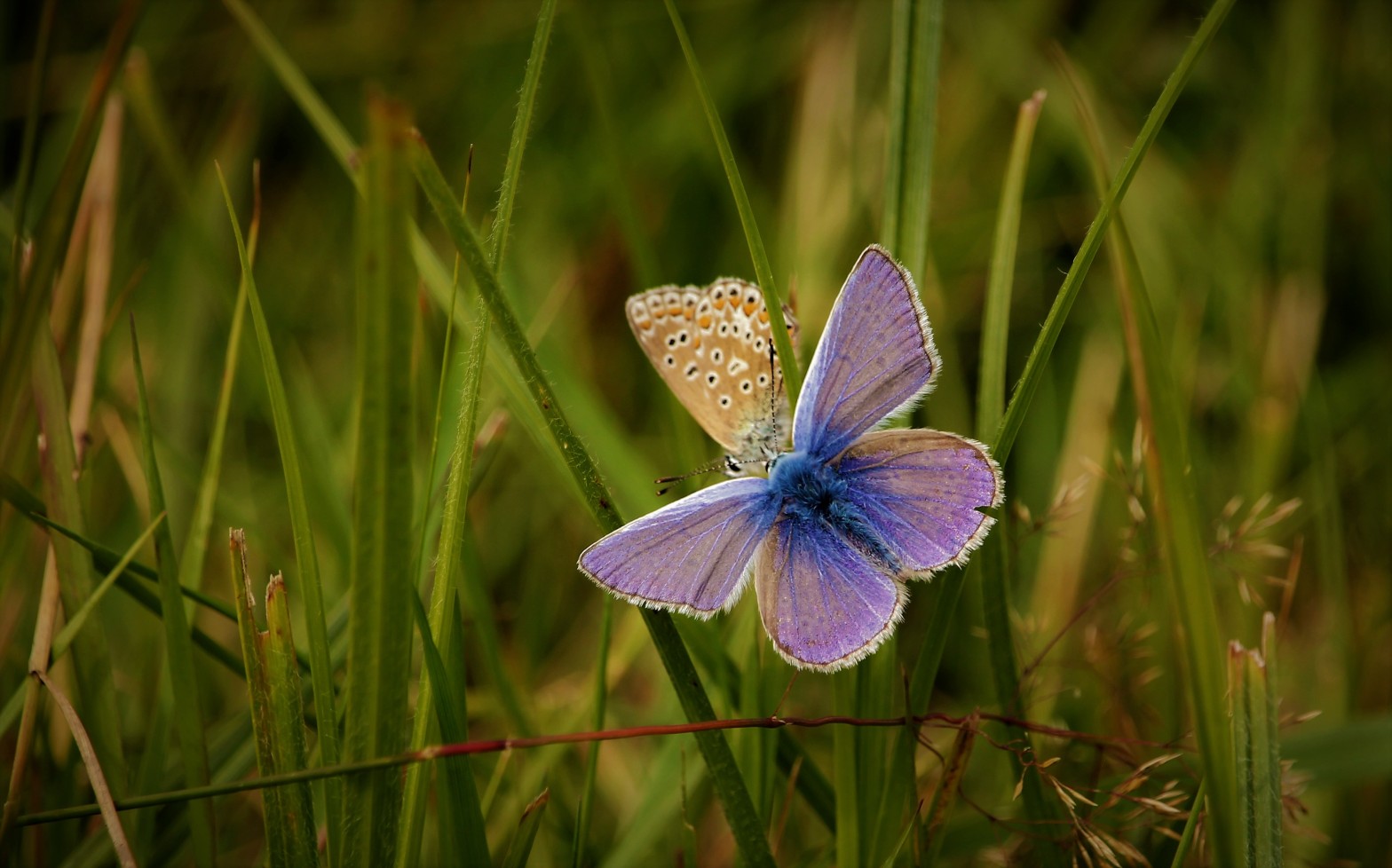
Water drips from the gutter edges and streams down the bulge of the waterbutt. The ridge beyond the field just a vague blur behind a screen of rain. Its welcome, to some degree, although perhaps not in such instant quantity.
The woods where I walked last evening were dusty and bare, a few withered chanterelles dotted around the shells of slug-eaten ceps – gnawed long before they’d pushed cleared of the leaf litter. We have had plenty of cloud in recent weeks, and patchy squalls, but the deluges that have swollen rivers and smashed reservoir dams up country have eluded us. The Frome is as low as I have seen her, and the Wyn in the valley seems to be pondering the option of going underground.
This rain won’t do much for the water table, and its ferocity will do little for the land. Save soak any crops still standing and swamp the roads and rivers with dislodged topsoil. It’ll put the butterflies down for a day or two as well, and in recent weeks they have been particularly conspicuous.
Some are calling it a ‘butterfly summer’, although the term is itself a vaguity. Summer should always be a good season for butterflies and other pollinators, and although there seems to have been a better flutter this year than for many, numbers remain lower than they would have been a quarter of a century ago. The shift in baseline distorts our view, much like the erratic nature of our climate.
And a good summer, swollen by an influx of painted ladies, should not detract from a poor spring. I have only seen 3 small tortoiseshells this year, and locally at least, numbers of other hibernators such as peacocks and brimstones are not what they might be.
Nevertheless, as some species struggle, we should enjoy those that boom. In the past week or so, we have added small copper and wall brown to our ‘garden list’ (taking it up to 23 species), and some of the most striking flyers, marbled whites and common blues, have dazzled in their masses.




Being outdoors brings you into contact with many things, this year l was fascinated by a single specie butterfly l hadn’t really noticed before. Almost all chocolate brown, they were all on rough grassland around a dry ditch. On my return home l found it in a book, a ringlet. It made my day, there were lots about that day.
Sent from my iPad
>
Ringlets seem to have bene doing well in recent years. Funnily enough they were a species I had not previously noticed, but now seem to fill the air in early summer…..
Hello Kevin- I’ve had a lovely summer with the painted ladies in Kent. The ‘invasion’ year or whatever they call it (!) I live by the cliffs in Ramsgate and I get a good heads-up on the latest migrants. I was just looking through your entries for a story you wrote on harriers. I now think it might have been an FA article! The reason for my renewed interest is that I was watching a male marsh harrier yesterday- from a local bypass of all places. I was stuck in a traffic jam between Sandwich and Ramsgate so I got my binoculars out and zoomed in on a large brown blob sitting in the middle of the adjacent field. I focused in and it was a lone male MH. I couldn’t tell at first what it was until it began to flash its wings and spin about a bit. It appeared to be injured as it was limping a bit. Anyway, after a while a sinister looking crow drifted into the scene and began to peck at the harrier’s bad leg. Bastard. Eventually the harrier spread its wings and the crow backed off- but then came back periodically. The traffic eased and I had to bugger off but I’d had twenty minutes of avian theatre by that point. I suffer from the sin of sentimentality when it comes to birds so I hope the harrier survived/ended up giving the crow what for. It seemed healthy other than the leg. Anyway, I rarely see them so what a treat… A most moreish bird…
Hey Gareth – hope you’re well. What an amazing thing to watch! Was it definitely injured? I wonder if it had caught something and the crow was trying to pinch it? The wing flapping might suggest that – an attempt to mantle the prey or, more likely, appear a lot bigger, rather than flashing its feet but risk having its dinner nicked.
I have seen raptors ‘limp’ with a food item after they have caught it – particularly in the open. They obviously want to tuck in but feel vulnerable with other scavengers or bigger predators around.
That said, if you watched it for that long you are probably right on the injury front. I really hope it survived (I get sentimental too), but a harrier with only one foot will struggle…..
I should add that I quite like crows, too – not as much as a marsh harrier, obviously, but they do have a lot of character!
Hope the fishing is good.
very best
KEv
Fascinating, Kevin. I’ll be on the look-out for that feign-limp! And I love crows, despite my cursing! But they can be such swines! Off out to look for a kingfisher in my local harbour- Take care and Enjoy the Autumn Angle- Gazza